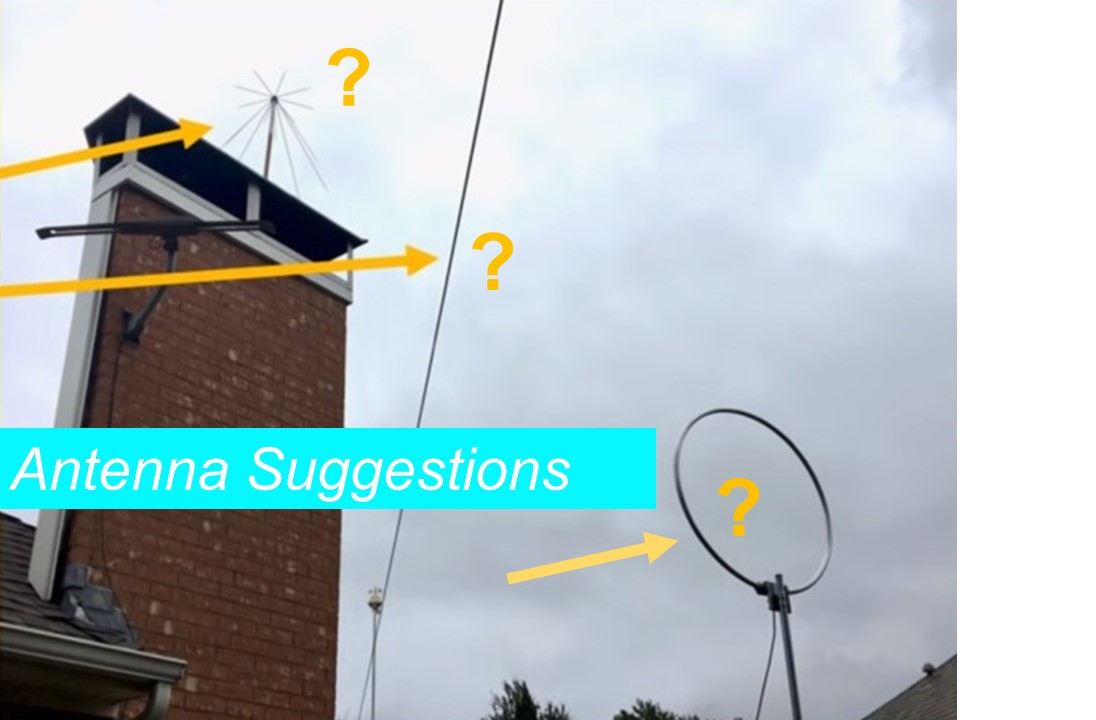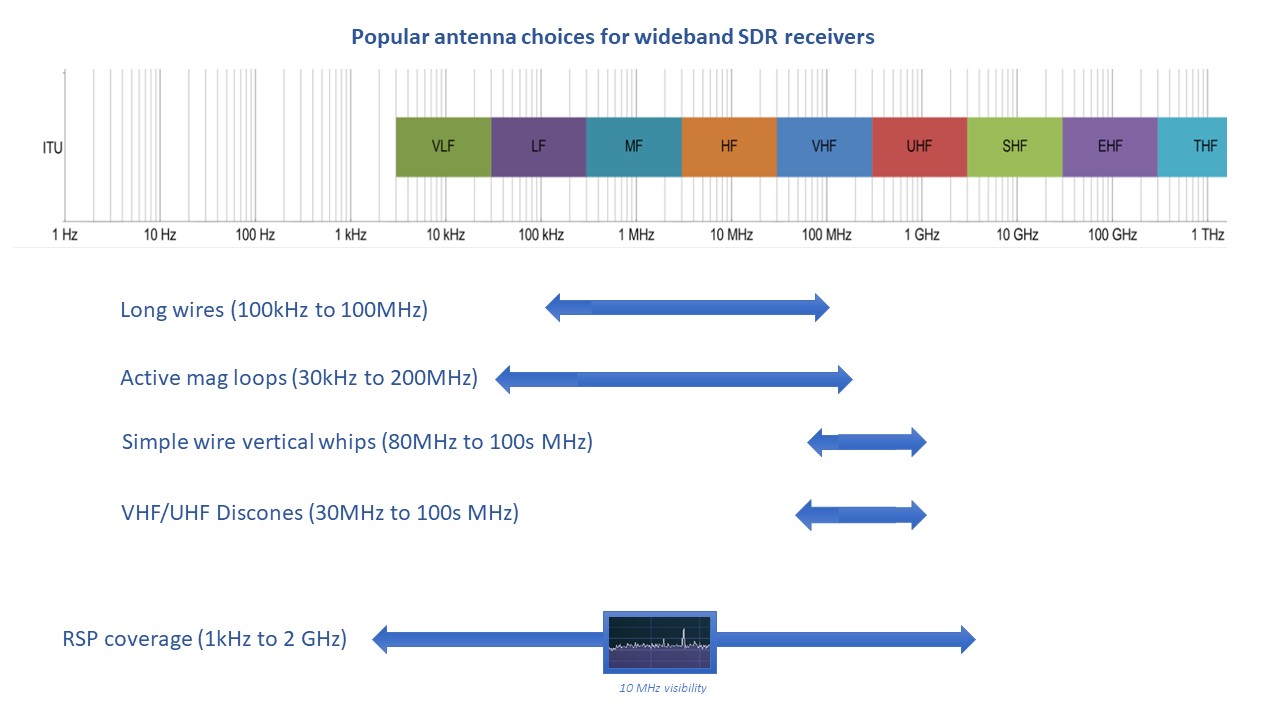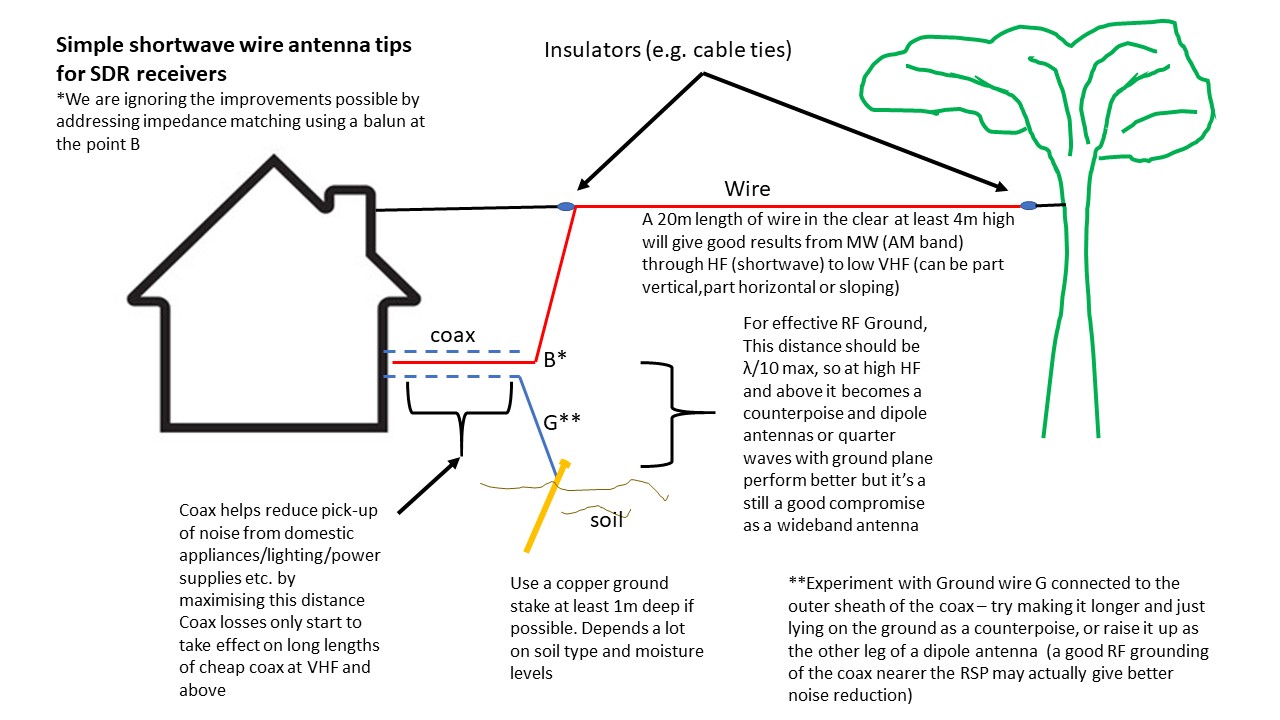
Getting started – an introduction to antennas
So you’re considering an SDR receiver or already have one. With any of the RSP family you have the possibility of receiving signals anywhere from 1kHz all the way up to 2GHz. That’s a lot of spectrum and no single antenna will give good performance over the entire frequency range. However it is possible to cover most of it with just 2 or 3 antennas.

The picture above shows the four most popular choices of antenna for covering the bulk of the spectrum offered by wideband SDR receivers like the SDRplay RSP family. The “long wire” (more correctly named as the “random wire” antenna) and the whip antennas are the lowest cost options but have some limitations which is why the more expensive active magnetic loop and discone options have become popular. The key pros and cons are shown in the table below:

For HF there is a lot of scope for experimentation as illustrated in the following attempt to summarise some of the considerations. Trial and error can play a big role in getting the best signals and the least locally generated electrical noise:

For dedicated reception of a narrow band of specific frequencies there’s a whole host of specialist options (e.g. ADSB antennas for 1090MHz, Inmarsat antennas for 1.6GHz, special 137MHz antennas for NOAA satellite reception and so on as well as the traditional yagi antennas with directional properties.
However for now, just looking at the most common choices, here are links to wiki pages each of the popular antennas types mentioned above:
The long wire antenna: https://en.wikipedia.org/wiki/Random_wire_antenna
The active magnetic loop antenna : https://en.wikipedia.org/wiki/Loop_antenna and a catalogue of choices from the Radio Reference wiki: https://wiki.radioreference.com/index.php/Loops
VHF/UHF whip antenna: https://en.wikipedia.org/wiki/Whip_antenna
Discone antenna: https://en.wikipedia.org/wiki/Discone_antenna
There are many useful antenna resources on the Electronics Notes website: Antennas & Propagation – Aerials » Electronics Notes (electronics-notes.com)
Videos:
You can search on our Documentation and Videos catalogue for video guides to antenna related topics (both our own and those made by 3rd parties): https://www.sdrplay.com/apps-catalogue/
Here are a few examples:
Antenna basics and what signals are where in the spectrum
The importance of a counterpoise or “ground” for shortwave
Recommended antennas for use with SDRplay RSPs:
SDRplay has had a good long term relationship with several antenna manufacturers (e.g. Bonito, Moonraker, SDR-Kits and so on). More recently we’ve been checking out specific antennas to add to our recommended list. All the antennas recommended have a good price/performance/functionality mix. Be sure to look out for the “Approved for use with SDRplay” badge on the antenna vendor’s website. Click here to find out more about the comparison videos we are creating.
Feb 2024 update: We added some additional recommended antenna suggestions:
Bonito Megaloop FX: https://www.bonito.net/hamradio/en/mega-loop-fx/
Cross Country Wireless Antenna amplifier LAA++: http://www.crosscountrywireless.net/loop_antenna_amplifier.htm
For a wire antenna, highly recommended by users is the PAR EF-SWL antenna which is polular in the USA.. It is being sold by a few companies now such as DX Engineering… https://www.dxengineering.com/parts/pez-ef-swl
LZ1AQ active amplifier kit: https://active-antenna.eu/amplifier-kit/
Unfortunately the Wellbrook ALA1530N is no longer available now that Wellbrook has ceased manufacturing.
The MLA30+ is available from many sources and is a reasonable lower cost option when budgets are tight . As with many products, beware cheap imitations. See this video comparison: https://youtu.be/6PTu0g5W9do
There’s a Facebook group dedicated to improvements on the MLA30+: https://www.facebook.com/groups/mla30loopantenna/ – that is a good place to get local recommendations on trusted sellers (some of our SDRplay resellers sell this antenna )
For indoor use the GA450 from Moonraker is very compact but requires manual tuning – see Mike’s video comparing it with an MLA30+ : https://youtu.be/scwD68WQHB4
We are grateful to Mike Harwood who has been testing these antennas as described in this video: https://youtu.be/aky9sVS0rTU
If you have suggestions and comments for Mike, please make them in the comments section of the YouTube video.
More recommendations to follow…. if you have an antenna you think we should be recommending – get in touch via feedback@sdrplay.com

